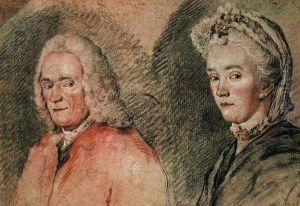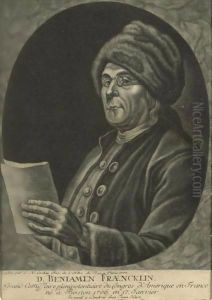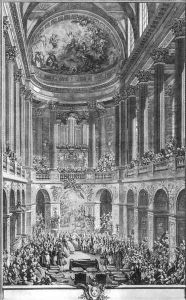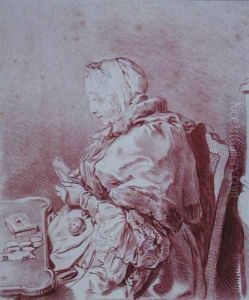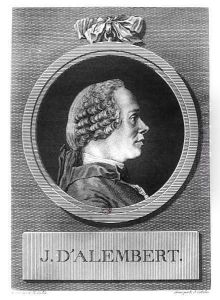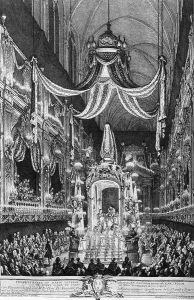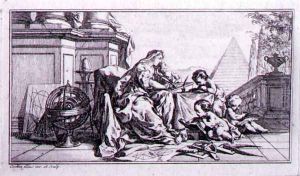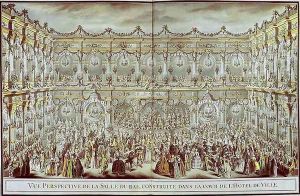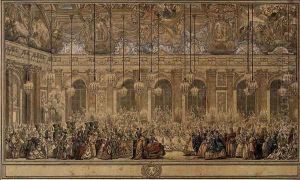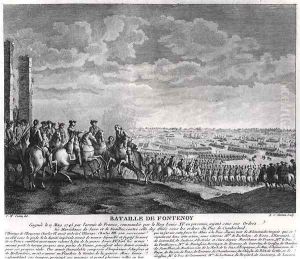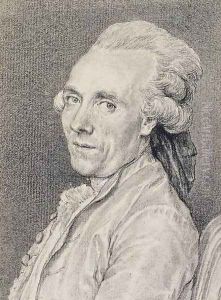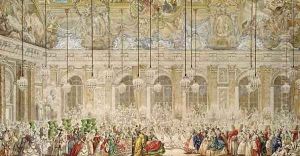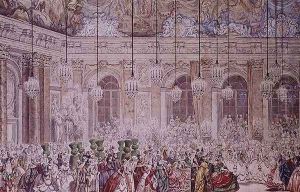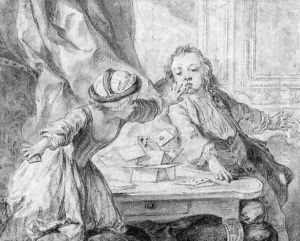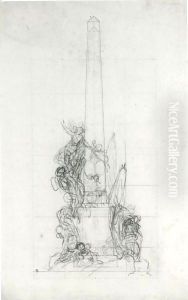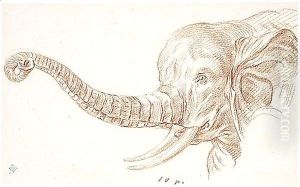Charles-Nicolas II Cochin Paintings
Charles-Nicolas Cochin II was a prominent French engraver, designer, writer, and art critic, born in 1715 in Paris, France. Coming from a family with a strong artistic background—his father, Charles-Nicolas Cochin I, was also an engraver—Cochin showed an early interest and talent in the arts. He received his initial training from his father and quickly established himself as a skilled engraver and draughtsman. Cochin's work was highly regarded for its detail, elegance, and expressive quality. He became known for his engravings of contemporary events, portraits, and scenes from the theatre, which were acclaimed for their sophisticated compositions and insightful representation of the French society of his time.
Cochin's talents were not limited to engraving. He was deeply involved in the artistic and intellectual circles of 18th-century Paris, contributing to debates and discussions on art theory and criticism. He was an advocate for the French Academy in Rome and played a significant role in the development of the Encyclopédie by Diderot and d'Alembert, where he contributed articles on art and engraving. His writings provided insightful commentary on the art and artists of his period, and his opinions were influential in shaping contemporary and future perceptions of art.
In 1751, Cochin was appointed Secretary of the Royal Academy of Painting and Sculpture, a position that allowed him to exert considerable influence on the French art scene. He was instrumental in organizing the academy's exhibitions, and his efforts were pivotal in promoting the careers of many young artists. Cochin was also a key figure in the planning and decoration of several royal events, including the lavish festivities organized for the marriage of the Dauphin in 1745.
Cochin's dedication to the arts was recognized by King Louis XV, who awarded him the Order of Saint Michael, a prestigious honor. Despite his success, Cochin remained deeply committed to the advancement of the arts and the nurturing of artistic talent until his death in 1790. His legacy is reflected in the wide range of his works, from his engravings and designs to his writings on art, which continue to be studied for their contribution to the understanding of 18th-century French art and society.
